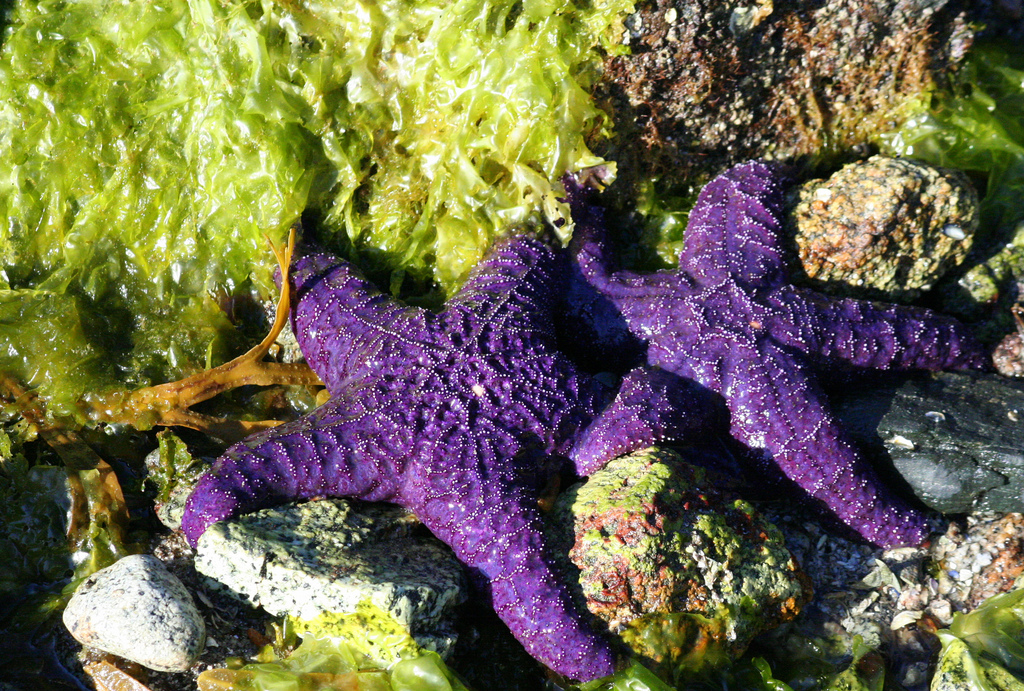Marine scientists are finding large numbers of starfish along the West Coast, dying from a disease known as ‘sea star wasting syndrome.’
The first symptoms include an emaciated appearance and white lesions on the ectoderm. Within a matter of days, afflicted starfish begin to lose their characteristic arms, leading to their disintegration into what some observers have described as “goo.”
While several sea star species have been affected Pisaster ochraceus, also known as the ochre sea star, has been particularly hard hit. In some tide pool populations up to 95 percent of this species have died from the disease.
At the Gulf of Farallones National Marine Sanctuary building in San Francisco, starfish kept in an aquarium contracted the disease via water pumped in from the ocean. Other marine creatures including eels, sculpins and anemones, living in the same aquarium, were not affected.
In California, accounts of infected sea stars range from north of Bodega Bay to Orange County. Nationally, there have been reports of infection as far north as Alaska.
While there have been localized situations in the past, such as the 1983-84 outbreak in Southern California, researchers have been particularly troubled by the extent of this recent occurrence.
When pathological studies have been undertaken, the cause of the disease is typically a bacterium (vibrio). Pete Raimondi, chairman of the Department of Ecology and Evolutionary Biology at UC Santa Cruz’s Long Marine Lab, told the Santa Rosa Press Democrat that starfish are susceptible to bacterial infection and warmer waters can boost bacteria growth.
This was the case when the wasting disease hit Southern California in the early ‘80s during an El Niño phenomenon. This year however, sea temperatures off Bodega Bay have been below average, puzzling researchers who are looking into the cause of the disease.
Considered a keystone species, Pisaster ochraceus feed upon mussels, playing an important role in population control. Researchers are concerned that should the sea star’s population be decimated, mussel populations will proliferate, crowding out other species.



.jpg)